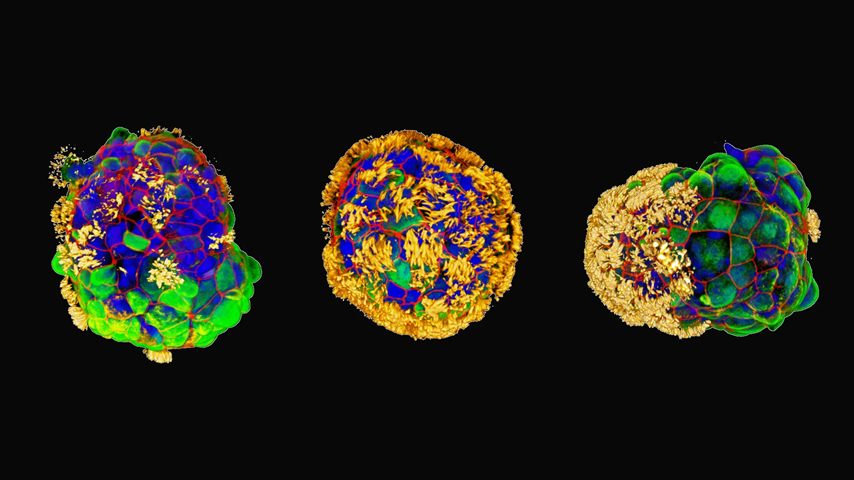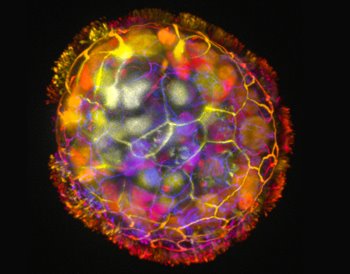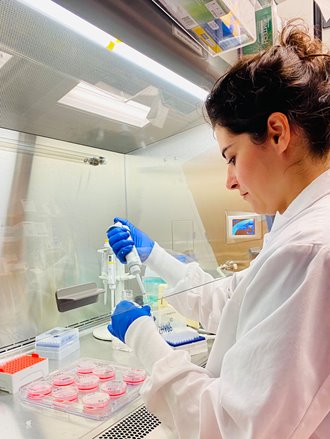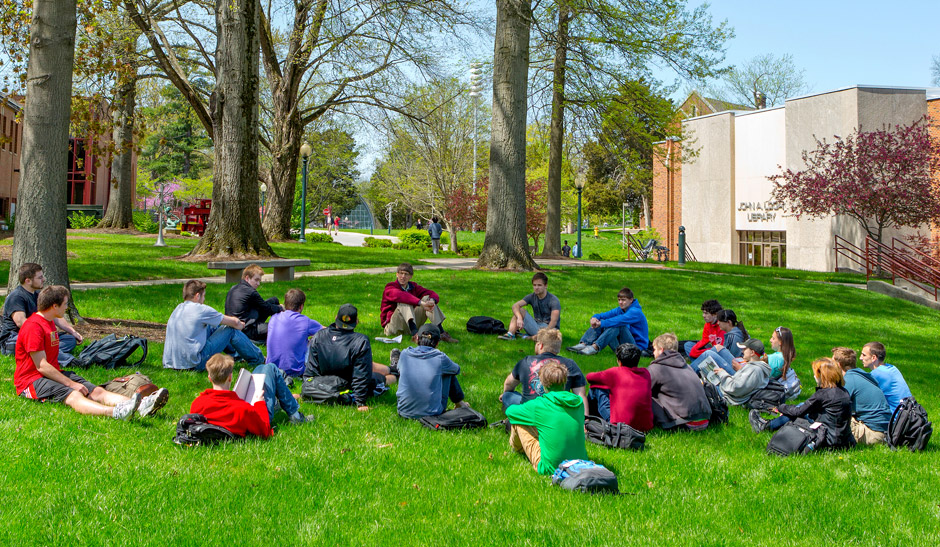Robots Built from Human Tissue
Robots Built from Human Tissue


Researchers develop multicellular organisms made from human cells that present a new approach to regenerative medicine.
A new breed of self-assembling multicellular biological robots made from human tracheal cells is showing promise in healing surface nerve damage.
Gizem Gumuskaya, a doctoral student under the advisement of Michael Levin, Distinguished Professor in Biology at Tufts University, has developed microscopic robots that pave the way for therapeutic tools built using the body’s own cells.
Most drugs and treatments in use today vary widely in their efficacy and side effects. “We want to fill an unmet need in regenerative medicine to have interventions that are smart. They make decisions and have context-sensitive actions,” Levin said.
Understanding that piggybacking on the body’s own tissues is the most non-invasive route to treatments, the research did not include edited cells, nanomaterials, or synthetic biological circuits.
To study behavior, the researchers wanted to work with easily observable elements such as ciliated cells that can move around in three-dimensional space. Since the most easily harvested ciliated cells live in the trachea, the research team used them as the basis for their experiments.
After the tracheal cells started to proliferate in a culture and matured, Gumuskaya coaxed them into tiny spheroids with cilia pointing outward, forming oars that can swim. The researchers then painted many of these cells over a two-dimensional surface scratch in a petri-dish culture.
The researchers found that the ciliated cells assemble together to form a superbot or bridgebot, which essentially “stitched” the wounded surface back together by stimulating the creation of neurons.
“We edited the culture environment to modulate the ways cells interact with each other to get them to create a new architecture that was not observed in nature before,” Gumuskaya said.
If cells reproducing in unexpected or unusual ways sounds like cancer, Levin reassured that these anthrobots are not focused only on unchecked growth. Instead, they are collaborating toward a goal, such as when a collection of cells forms an organ. Levin said the cells in an anthrobot stop growing after they reach a certain size and, unlike cancer cells, do not spin out of control. Anthrobots live for a limited span of a few weeks before they biodegrade.
The multicellular structures defy neat compartmentalization into a singular category such as “robot” or “living thing,” Levin said. All the labels can apply at the same time, he argues.
In a paper for Advanced Science, the researchers explain that the biological robots are called anthrobots “in light of their human origin and potential as a biorobotics platform.”
A larger motivation that inspires the research is to understand how evolution is working today. Evolution, Levin said, might not be about specific solutions for specific problems but about developing problem-solving machines that are plastic enough to solve any problem at hand.
In this research, the problem cells had to contend with was nerve-damaged tissue. But cells might be capable of much more than just this one task of healing. “We’re very interested in plasticity and in putting biological materials in novel circumstances they have not seen before and seeing what other kinds of behaviors are possible from exactly the same hardware,” Levin said.
“The fact that they assemble into particular shapes and that they have certain behaviors and know what to do. The fact that they heal scratch wounds. A lot of these things are already baked into the competencies of the material,” Levin said. “Who knows what else they can do?”
Research will also focus on what the anthrobots can sense. “What preferences do they have? Can they be trained? What kind of learning can they do if they can learn?’” are a few of the questions to be addressed.
The next steps would be to explore the application to see if anthrobots can be used for treating different types of neurodegenerative diseases, Gumuskaya said.
“We’re envisioning anthrobots as a new platform for personalized medicine,” she added.
Poornima Apte is a technology writer in Walpole, Mass.
Gizem Gumuskaya, a doctoral student under the advisement of Michael Levin, Distinguished Professor in Biology at Tufts University, has developed microscopic robots that pave the way for therapeutic tools built using the body’s own cells.
Most drugs and treatments in use today vary widely in their efficacy and side effects. “We want to fill an unmet need in regenerative medicine to have interventions that are smart. They make decisions and have context-sensitive actions,” Levin said.
Understanding that piggybacking on the body’s own tissues is the most non-invasive route to treatments, the research did not include edited cells, nanomaterials, or synthetic biological circuits.
To study behavior, the researchers wanted to work with easily observable elements such as ciliated cells that can move around in three-dimensional space. Since the most easily harvested ciliated cells live in the trachea, the research team used them as the basis for their experiments.
After the tracheal cells started to proliferate in a culture and matured, Gumuskaya coaxed them into tiny spheroids with cilia pointing outward, forming oars that can swim. The researchers then painted many of these cells over a two-dimensional surface scratch in a petri-dish culture.
The researchers found that the ciliated cells assemble together to form a superbot or bridgebot, which essentially “stitched” the wounded surface back together by stimulating the creation of neurons.
“We edited the culture environment to modulate the ways cells interact with each other to get them to create a new architecture that was not observed in nature before,” Gumuskaya said.
If cells reproducing in unexpected or unusual ways sounds like cancer, Levin reassured that these anthrobots are not focused only on unchecked growth. Instead, they are collaborating toward a goal, such as when a collection of cells forms an organ. Levin said the cells in an anthrobot stop growing after they reach a certain size and, unlike cancer cells, do not spin out of control. Anthrobots live for a limited span of a few weeks before they biodegrade.
The inspiration for anthrobots
An architect with degrees in the discipline and in computational design, Gumuskaya is interested in exploring how we can “conceive of nature as a design medium to create novel living structures.” Such structures would embody key biological characteristics, including self-replication of building components and the ability to regenerate after damage.The multicellular structures defy neat compartmentalization into a singular category such as “robot” or “living thing,” Levin said. All the labels can apply at the same time, he argues.
In a paper for Advanced Science, the researchers explain that the biological robots are called anthrobots “in light of their human origin and potential as a biorobotics platform.”
A larger motivation that inspires the research is to understand how evolution is working today. Evolution, Levin said, might not be about specific solutions for specific problems but about developing problem-solving machines that are plastic enough to solve any problem at hand.
In this research, the problem cells had to contend with was nerve-damaged tissue. But cells might be capable of much more than just this one task of healing. “We’re very interested in plasticity and in putting biological materials in novel circumstances they have not seen before and seeing what other kinds of behaviors are possible from exactly the same hardware,” Levin said.
“The fact that they assemble into particular shapes and that they have certain behaviors and know what to do. The fact that they heal scratch wounds. A lot of these things are already baked into the competencies of the material,” Levin said. “Who knows what else they can do?”
Future steps
In the near future, Gumuskaya and Levin will likely study the anthrobots’ other medically relevant competencies. “We're also going to be starting to try to develop different ways to program them for new form and function,” Levin said, researching ways for the organisms to take on behaviors they can’t perform yet.Research will also focus on what the anthrobots can sense. “What preferences do they have? Can they be trained? What kind of learning can they do if they can learn?’” are a few of the questions to be addressed.
The next steps would be to explore the application to see if anthrobots can be used for treating different types of neurodegenerative diseases, Gumuskaya said.
“We’re envisioning anthrobots as a new platform for personalized medicine,” she added.
Poornima Apte is a technology writer in Walpole, Mass.







